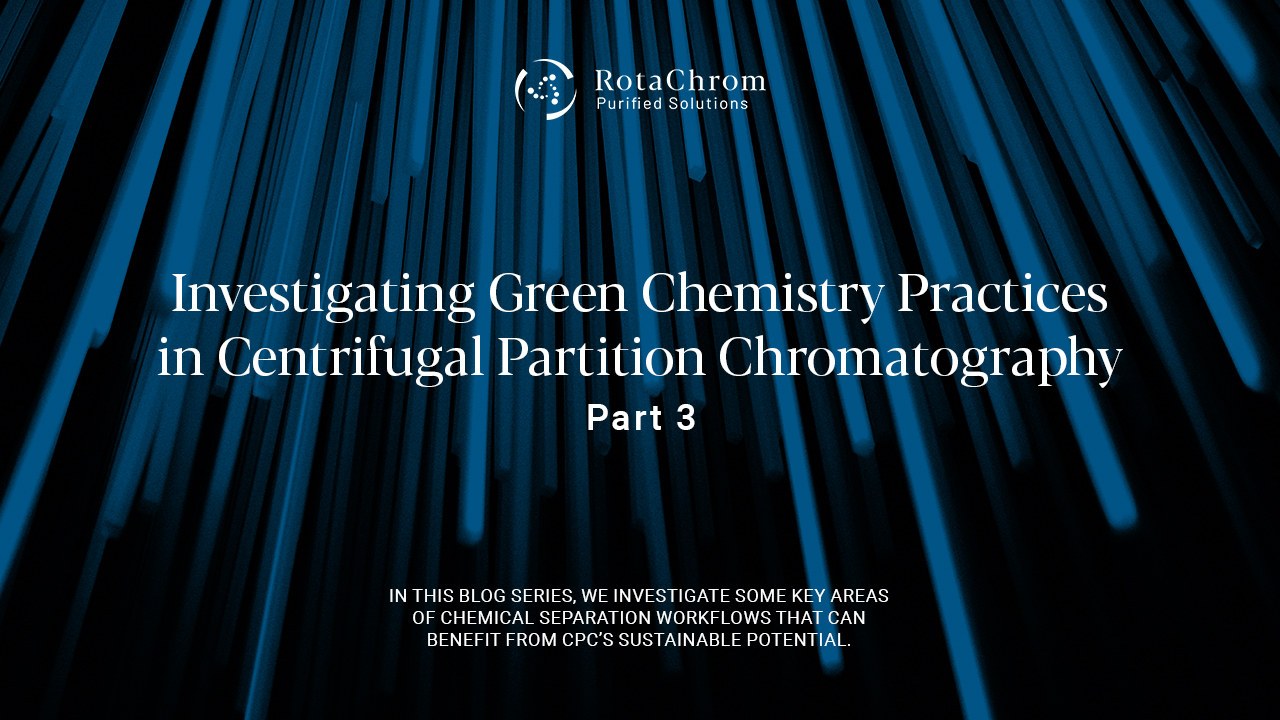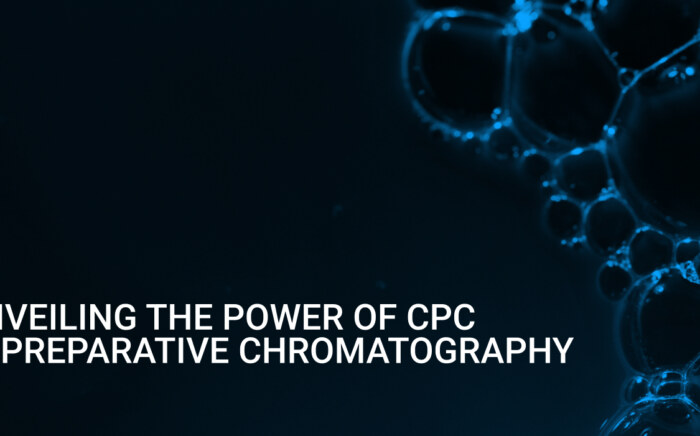Increasing separation efficiency by pH adjustment in Centrifugal Partition Chromatography
NewsCentrifugal partition chromatography (CPC) has been gaining popularity in the chemical purification industry for its ability to support sustainable processes and greener chemical production. In this third installment of our blog series, let’s delve into how you can coordinate some downstream processes with CPC to save costs and reduce your environmental impact.
CPC in Bioreactor Applications
Equilibrium-Limited Hydrolysis
It was studied that implementing CPC as a bioreactor is a potential solution for reducing solvent and energy resources. By pairing chemical reactions with the separation process, you can shorten manufacturing times in applications like equilibrium-limited hydrolysis. In this process, lower equilibrium conversions occur at high initial substrate concentrations due to the reverse reaction, making it inefficient to produce large amounts of optically pure amino acids by conventional means.
A CPC reactor can suppress the reverse reaction, but only if the reaction is faster than the reactants’ residence time and has no mass transfer resistance. With experimentally determined partition coefficients, stationary phase retention (Sf) values, volumetric mass transfer coefficients and kinetic parameters, you can predict peak shapes, conversion and resolution values as a function of the enzyme and polyethylene glycol (PEG) concentration. Knowing these values allows you to optimize your settings for both hydrolysis conversion as well as product and reactant separation.
When compared to a traditional batch reactor, a CPC bioreactor can double throughput after optimizing CPC and system conditions. It has also been shown that this reaction method maintains performance for up to a 24-hour period before gradually diminishing. And, CPC reactors were found to be more hydrodynamically similar to tubular flow micro reactors since both exhibit diphasic hydrodynamics driven by pulsation.
Multiphase Reaction Systems
CPC also outperforms stirred tank reactors (STR) in converting hydrophobic substrates when using an aqueous organic two-phase system after optimizing buffer type, concentration and system pH. When using an organic solvent, it should be compatible with the enzyme and work as an acceptable biphasic system that facilitates CPC separation. The CPC reactor doubled conversions compared to a STR, showing CPC’s capability to handle multiphase reaction systems.
When comparing STR to CPC reactors, CPC provides better mixing conditions and is more efficient when handling lower aqueous phase volumes. However, CPC exhibits earlier limitations than an STR when working with higher enzyme quantities, and the complex fluid dynamics within CPC constrain scalability. When better rotors and chamber geometries are developed to improve scalability and continuous processes, CPC will grow into an attractive alternative to STR.
Achieving Industrial-Scale Sustainability
Traditional Methods
Coupling CPC with conventional separation and isolation methods was demonstrated with sustainable functionalized taxanoid production. After microbial upcycling low-value feedstocks, CPC can be integrated to economic taxadiene isolation processes to enable consecutive chemo-enzymatic functionalization.
Biphasic, in situ extraction and purification processes like these are traditionally performed by reversed-phase high-performance liquid chromatography (RP-HPLC). Incorporating CPC into a downstream processing strategy is a greener alternative to the traditional method since it combines a rapid two-step extraction procedure with a subsequent CPC purification step.
By introducing CPC into the process, you can avoid the admixing and adsorption issues that can occur during RP-HPLC, providing taxadiene with 95% purity and throughput of roughly 250 milligrams per liter.
In addition, the increased diterpene mass load of taxadiene significantly raised process efficiency, improving recovery from high cell-density fermentation broth. This downstream CPC strategy enables biology-oriented synthesis of ad hoc-designed bioactive taxanoids at an industrial scale.
Pilot-Scale Processes
Another potential application is continuous, pilot-scale recovery of the bioactive components — hydroxytyrosol (HT), oleocanthal, oleacein and the monoaldehydic forms of oleuropein aglycone (MFOA) and ligstroside aglycone (MFLA) — from extra virgin olive oil.
In this example, after using liquid-liquid extractors for fractionation, CPC could enrich the total phenolic fractions during the purification step. Using step-gradient elution extrusion in an n-heptane, ethyl acetate, ethanol and water solvent system, the fractions of oleocanthal, oleacein, MFOA and MFLA can be recovered on the gram-scale with at least 80% purity. For greater purity, preparative HPLC further purifies these bioactive components to greater than 95%.
Because of the large volume of pure compounds recovered, these three industrial-scale techniques in vivo experiments a possibility for the first time.
Multiple Dual-Mode Purification
CPC can support throughput optimization efforts by means of process intensification and switching to continuous manufacturing instead of batch manufacturing. Improving these processes would provide greater automation and quality control, simpler scalability, boosted production throughput and more sustainable manufacturing from start to finish.
Researchers have previously investigated the potential for CPC-based quasi-continuous purification steps to integrate with multi-step, continuous synthesis of key intermediate bioactive carbazoles. A multiple dual-mode (MDM) CPC purification can follow the end of a two-step continuous-flow synthesis of the target molecule.
Using a one-phase intake of the sample solution as the input for the CPC step provides a 59% overall yield, greater than 99% purity and 2.24 g/h/L productivity**.** Increasing column capacity is a potential method to boost throughput and achieve industrial scale production. The promise of industrial scalability makes CPC ideal for continuous purification in future API and intermediate manufacturing process designs.
Beyond these applications, CPC’s potential to support green chemistry and sustainable chemical purification processes continues to grow.
To learn more, visit our technology page.
Want to get in touch?
Fill in the form below so our representatives can contact you. We will also let you in on more information on our technology.



